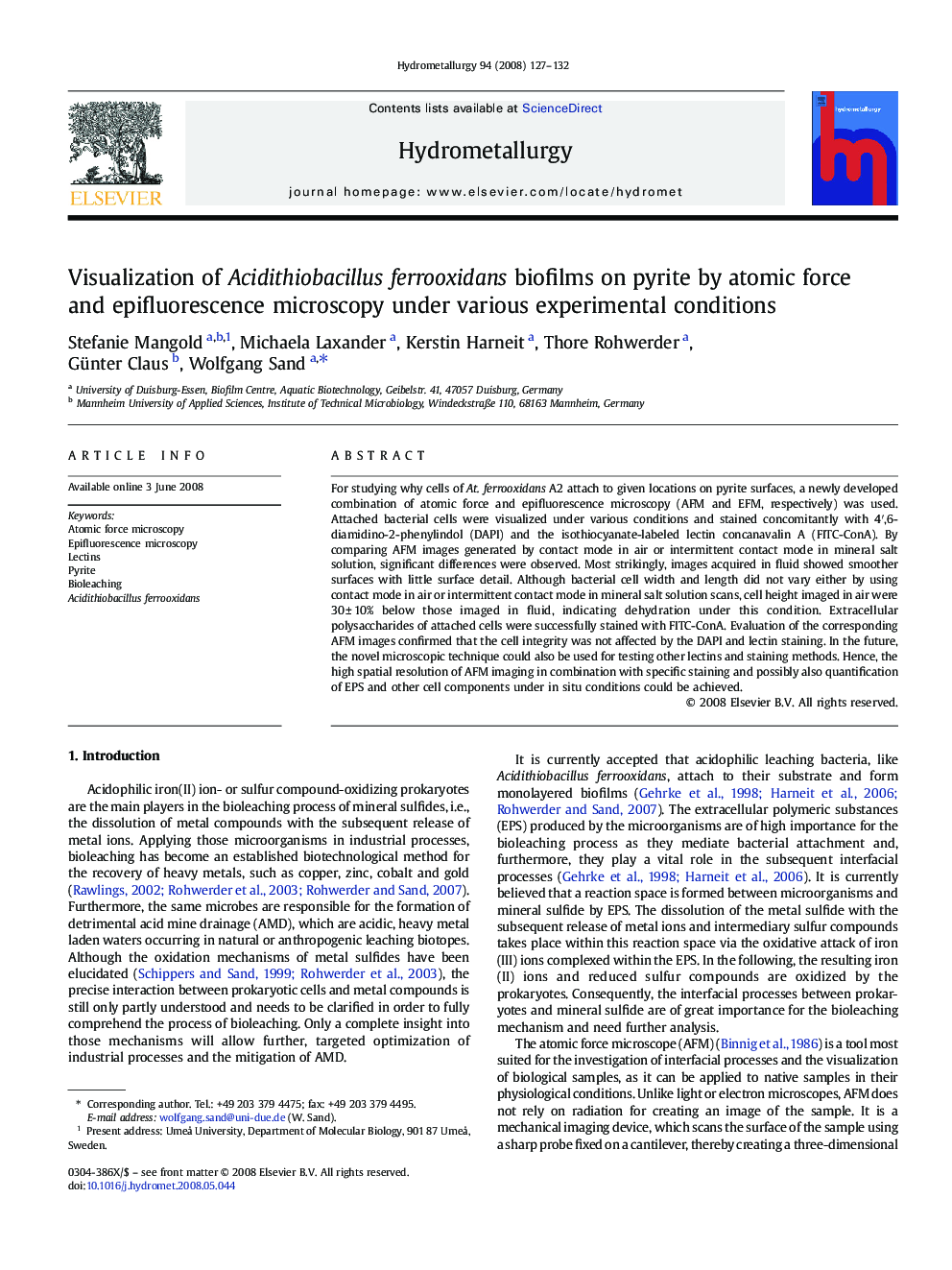| Article ID | Journal | Published Year | Pages | File Type |
|---|---|---|---|---|
| 213227 | Hydrometallurgy | 2008 | 6 Pages |
For studying why cells of At. ferrooxidans A2 attach to given locations on pyrite surfaces, a newly developed combination of atomic force and epifluorescence microscopy (AFM and EFM, respectively) was used. Attached bacterial cells were visualized under various conditions and stained concomitantly with 4′,6-diamidino-2-phenylindol (DAPI) and the isothiocyanate-labeled lectin concanavalin A (FITC-ConA). By comparing AFM images generated by contact mode in air or intermittent contact mode in mineral salt solution, significant differences were observed. Most strikingly, images acquired in fluid showed smoother surfaces with little surface detail. Although bacterial cell width and length did not vary either by using contact mode in air or intermittent contact mode in mineral salt solution scans, cell height imaged in air were 30 ± 10% below those imaged in fluid, indicating dehydration under this condition. Extracellular polysaccharides of attached cells were successfully stained with FITC-ConA. Evaluation of the corresponding AFM images confirmed that the cell integrity was not affected by the DAPI and lectin staining. In the future, the novel microscopic technique could also be used for testing other lectins and staining methods. Hence, the high spatial resolution of AFM imaging in combination with specific staining and possibly also quantification of EPS and other cell components under in situ conditions could be achieved.
